There are certain times during the day where the sunlight is a gift for photographers. One of those times is the Golden Hour! A magical but short-lived moment where the light is warm and golden and the shadows are long and mysterious. It is visible twice every day, weather permitting. It’s a time of day that every photographer should experience but what exactly is it?
The Golden Hour starts just before sunrise and also about an hour before sunset. It occurs when the sun is between +6 degrees above & -4 degrees below the horizon. The sun is mostly visible but low in the sky. Light is warm gold, orange & red. It’s the Magic Hour, but can be more or less than 1 hour.
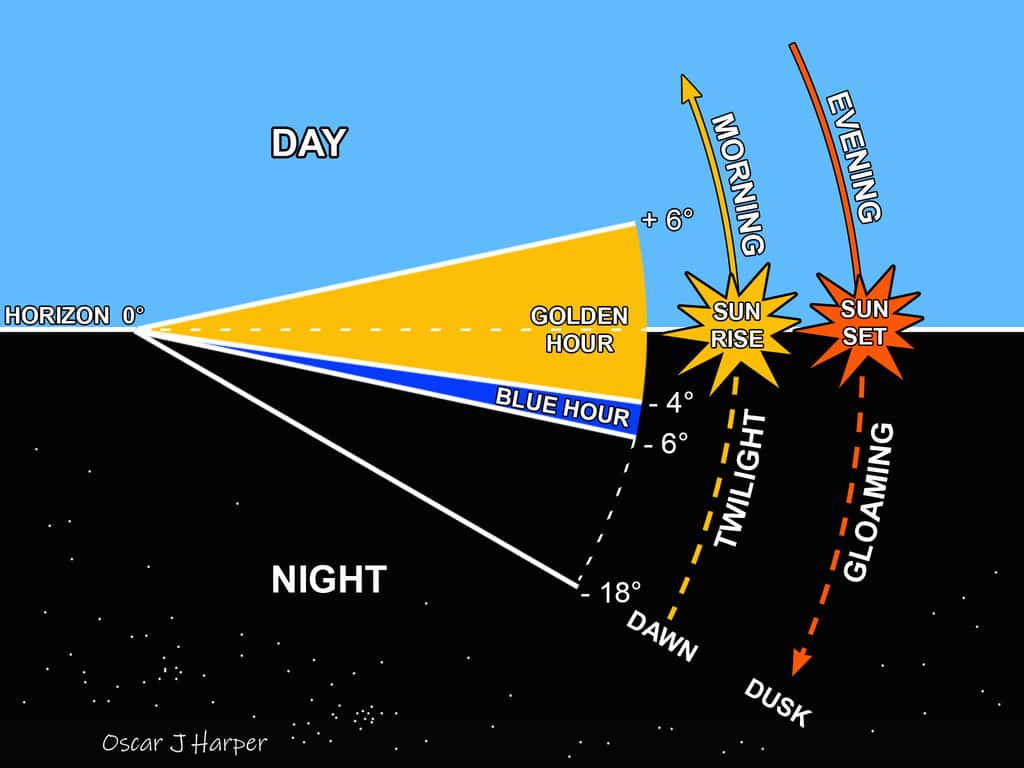
Diagram by Oscar J Harper
The possibilities for interesting photographs in this enchanting period of time are boundless. The light warms everything up and adds a positive quality to your photographs. Images can take on an almost mystical appearance by producing magical halos and softened silhouettes. It can make skin tones look soft and glowing with warm colours. The great thing is that it happens twice every day particularly if it’s not cloudy. Keep reading to discover how to find the Golden Hour and how to capture its other-worldly light.
Illustrated Guide to Finding And Capturing The Golden Hour
When is The Golden Hour?
Your local golden hour depends on where you are in the world, distance from the equator and the time of year. In the morning it actually starts just before sunrise and ends more or less than an hour later. In the evening you should be in place about an hour before sunset then watch as the light gently turns to the warm golden hues associated with the Golden Hour.
It lasts for a little while after sunset when the sun has dropped out of sight. If you are near the equator the ascent and descent of the sun are rapid so the Golden hour could be over very quickly. If you live far from the equator you are further from the sun and the Golden hour will be stretched out and give you more time to capture the light in your photography.
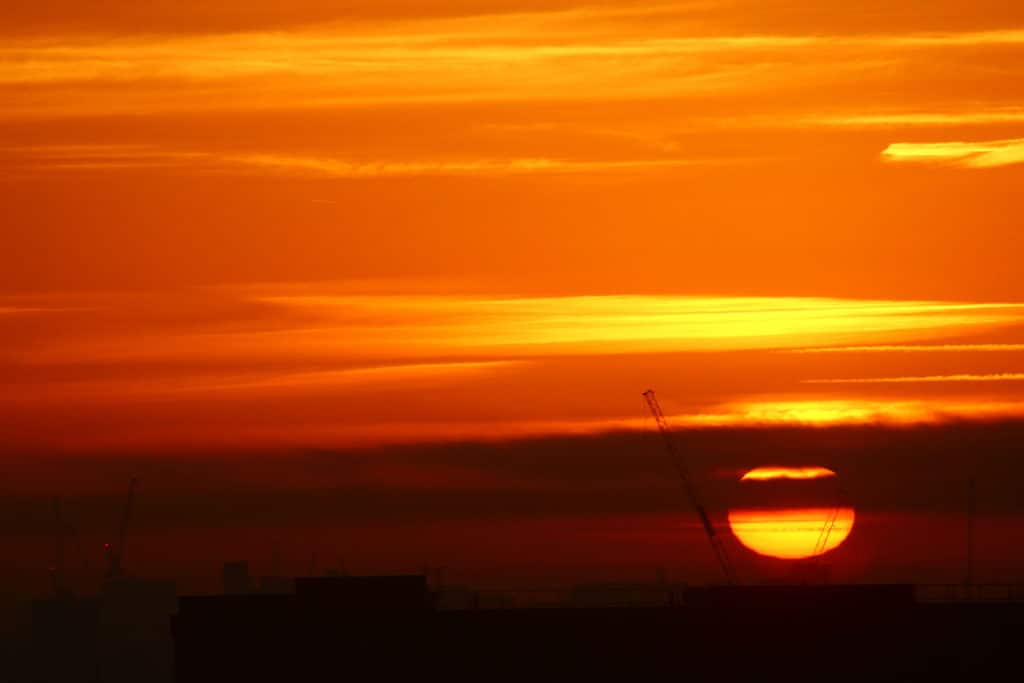
Finding The Golden Hour!
You can plan your trip to photograph during the two daily Golden hours by simply checking your local weather App. on your phone. They usually provide the exact times of Sun Up and Sun Down. You can check the day before and plan your expedition to arrive in plenty of time before sunrise or before sunset. There also plenty of digital services to help you catch the Golden hour exactly for your location and season.
Just type “Golden Hour Calculator” into your web browser on your computer or into the search on your phone App. store. You will find a whole host of incredibly accurate information for your exact location to help you get in place at the right time and location.
How do You Prepare For The Golden Hour?
Make sure you know what time the Golden hour will occur at your chosen time slot well before sunrise or sunset. Consider your location; how it will look, what landmarks or landscape features there might be and where you will place yourself to get a great shot. Make sure you know ahead of time what direction the sun will rise or set. Check the weather report to ensure a clear, cloudless sky.
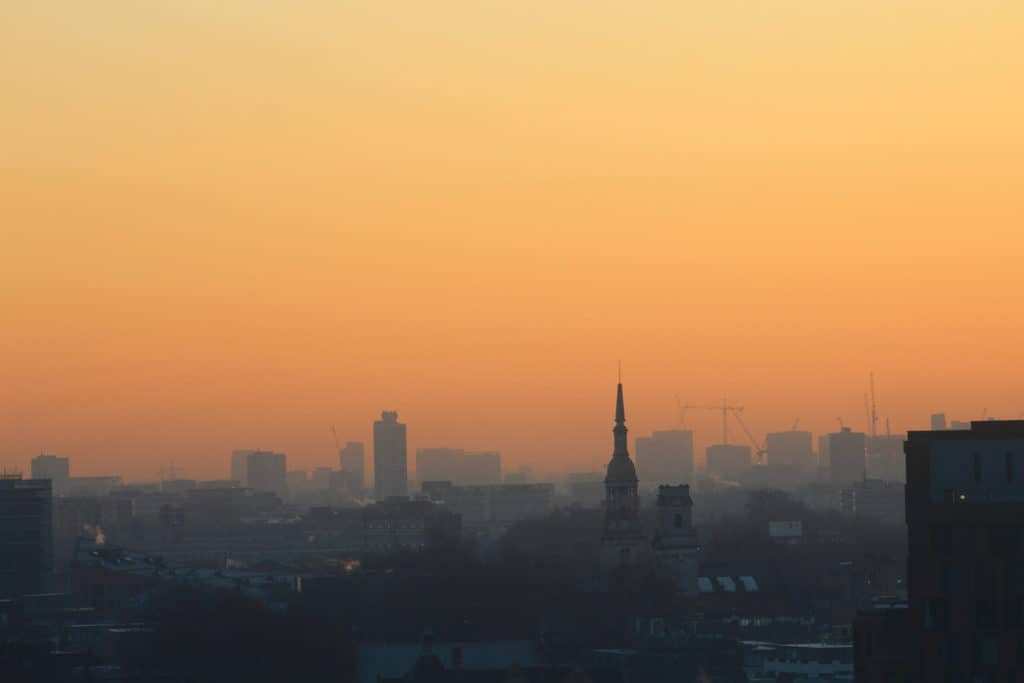
The Apps. discussed before will assist you with all of these variables. The Golden Hour is a brief shooting window so arrive early to set up and prepare. Bring a tripod with you as the light will be dimmer than when the sun is high in the sky so you may need longer shutter speeds and larger apertures.
What Camera Settings Work For The Golden Hour?
White Balance
One of the most important aspects of photography in the Golden Hour is the warm colour of the light. You don’t want to compromise that by allowing the camera to neutralise the wonderful golden/orange/red hues. Therefore, careful control of the White Balance is paramount. If you were to use the Auto White Balance there is a danger that the camera will try to cool down the naturally warm golden light by applying a blue cast to the scene. This would dilute the effect that the light of the Golden Hour can produce.
So, try applying a Preset White Balance that was designed to warm up cooler light temperatures, like those used for Cloud and Shade. This would then apply a warm colour cast that would enhance the yellow/orange light of the Golden Hour. In some cases, the results may be a little artificial though. For a more natural-looking result, you could use a Custom White Balance.
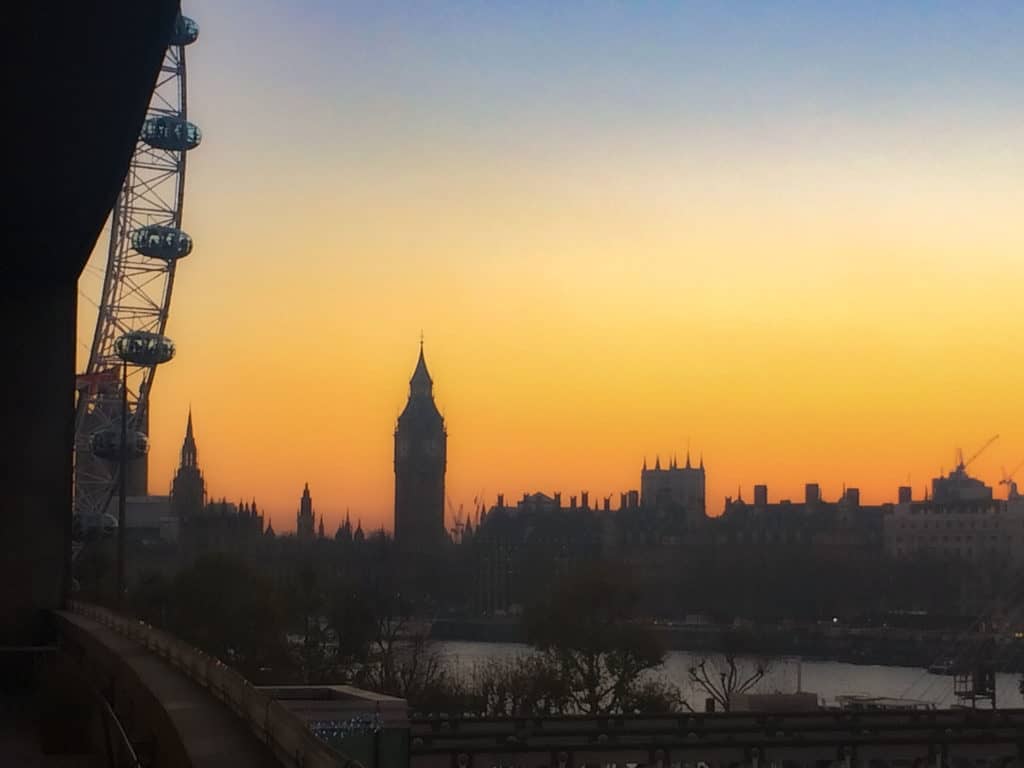
To achieve this you need to take a full-frame photograph of a white sheet of paper of the direct reflected light of the sun with no shadows on it. You then have to set this image as your Custom White Balance target image within your camera’s settings menus. Then, select “Custom” as your Preset White Balance within the WB menu page. Your images after following this process should achieve a very pleasing and accurate, warm and golden colour temperature.
Be aware that during the Golden Hour the light colour temperature is changing constantly and fairly rapidly. Therefore, if you have been shooting for more than 5-10 minutes, you may have to repeat the Custom White Balance process and set up a new white target image.
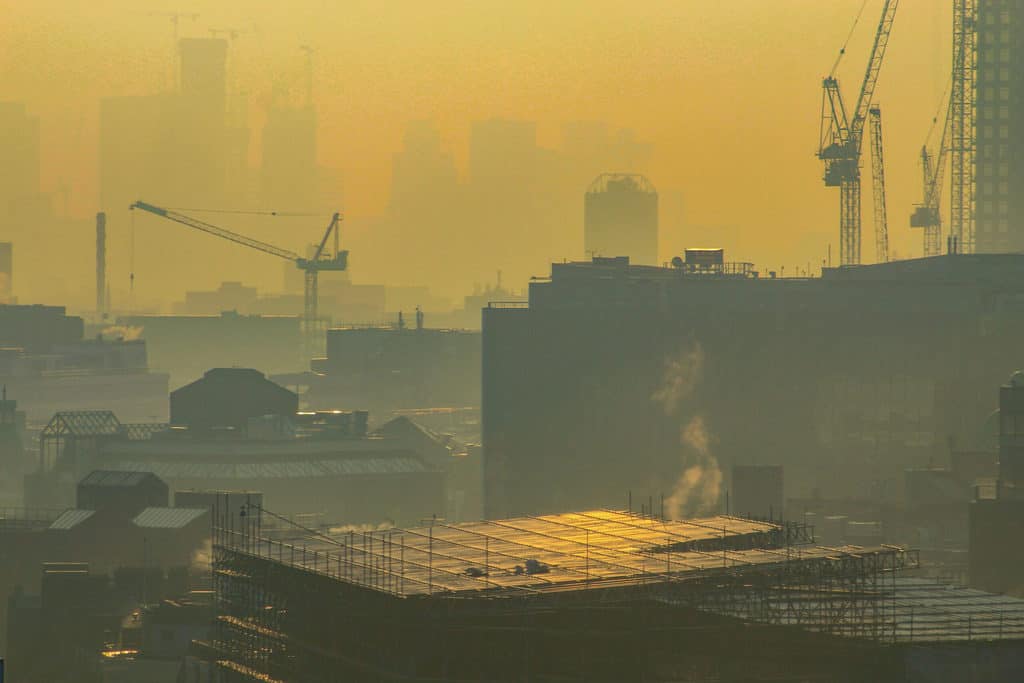
Photo by Oscar J Harper
RAW
Setting your camera to record in RAW as well as JPEG will give you much greater scope to correct the White Balance in Post-processing programs such as Adobe “Lightroom” and “Camera RAW” in Photoshop. You will also have an opportunity to reveal much more detail and colours that may appear lost in the dark shadows and the bright highlights of an image.
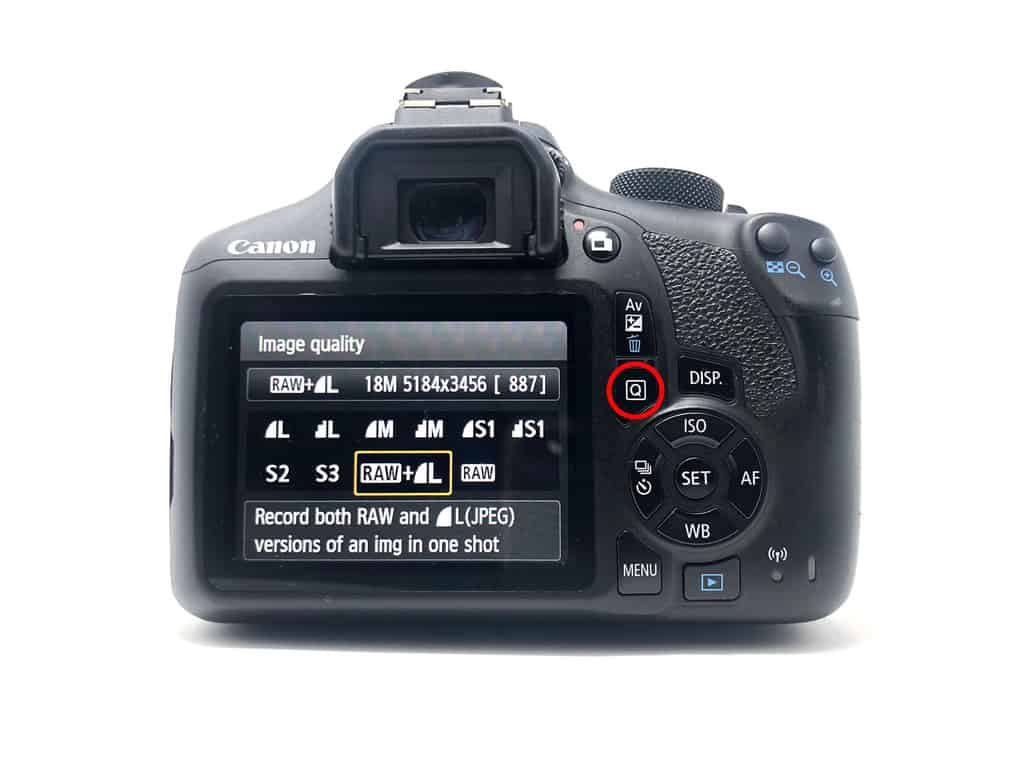
ISO
Choose an appropriate ISO to minimise noise. Remember that if you are using a tripod, and that is highly recommended, you can afford to use a lower ISO as there is little chance of blur due to camera shake.
Aperture
Choose a suitable aperture to capture the depth-of-field that you desire. A wide landscape or seascape would best be captured with a smaller aperture opening (F11 to F22 for example). This will ensure that most of the scene will be in focus from the distant horizon to the close-up foreground detail. On the other hand, if you plan to photograph portraits in the golden hour you might prefer to select a large aperture opening to blur the background and maximise the bokeh (soft light discs caused by blurring points of light in the background). Use the maximum aperture opening of your lens (F1.8 or F2.8 for example).
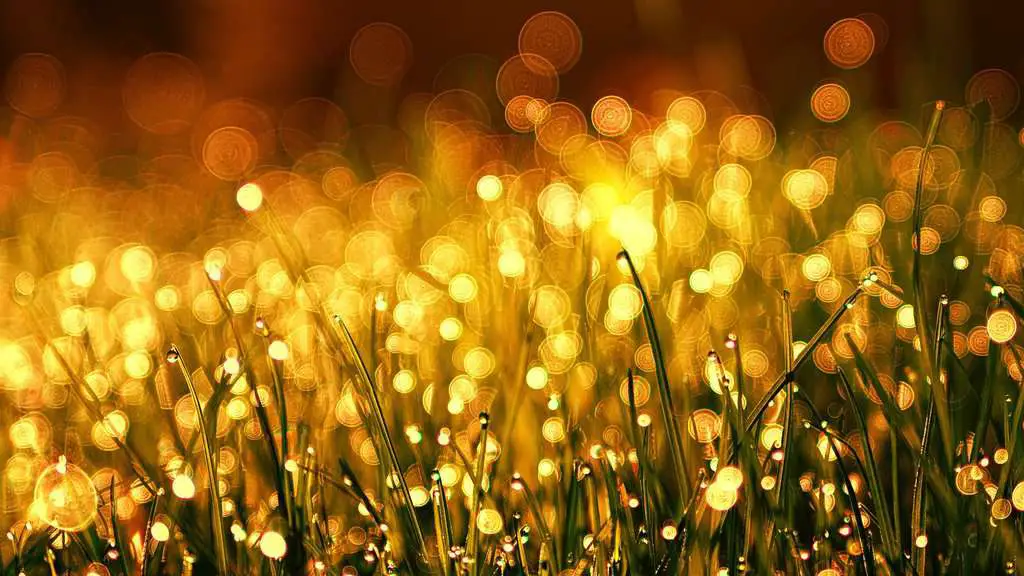
Shutter Speed
If you wish to smooth out the movement of a rippling ocean, you would need to use a very slow shutter speed of multiple seconds or minutes. To freeze the action of a flitting sea bird you would need to use a very fast shutter speed such as 1/250th or 1/500th of a second. In both cases, you have to be able to balance the exposure with the aperture opening size. If it is not possible to achieve a balanced exposure you may have to adjust the ISO setting to bring the exposure triangle back into balance.
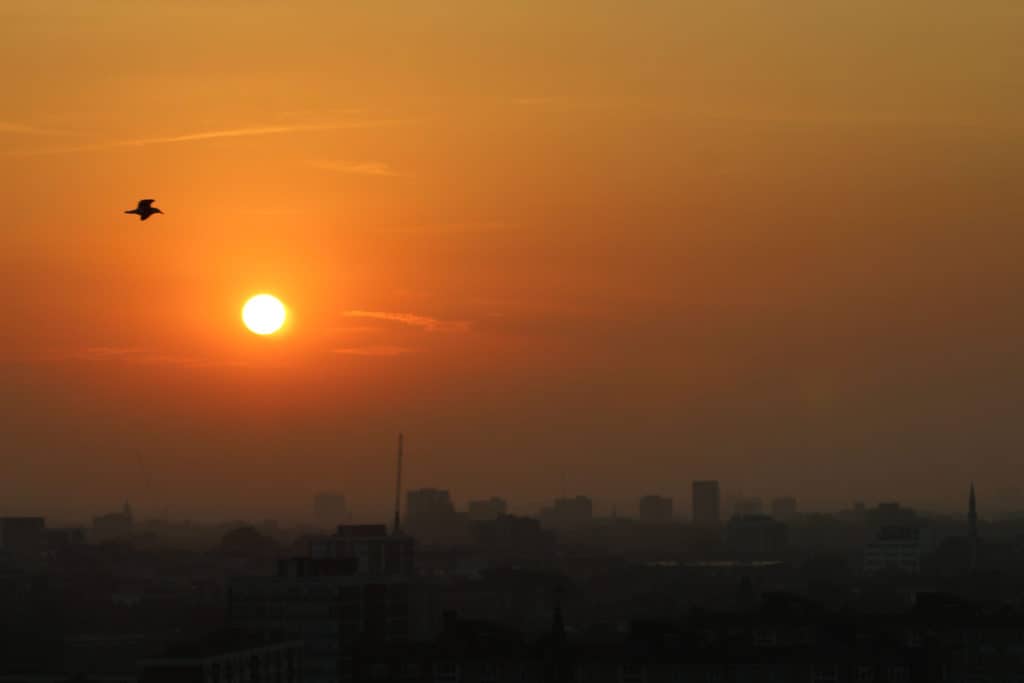
Sometimes, to achieve the very long shutter speeds of 30 seconds or longer, you may have to apply the use of Neutral Density (ND) filters. This will allow much longer shutter speeds by darkening down the scene that the light meter can see.
Shooting Modes
For ease of use, consider using Aperture Priority mode to control the Depth-of-field as the lighting conditions change when the sun gets lower or higher during the Golden Hour. In this mode, you can experiment with “exposure compensation” to make the scene darker or lighter as necessary.
You may want to work in Manual mode so that you have full control of the exposure. In this mode, you can choose an appropriate aperture opening or shutter speed, whichever suits the creative effect you desire. You can then balance the exposure by applying the opposite setting to bring the light meter back to the centre (or “0” zero setting). You will also have the flexibility to manually adjust the second setting to under or overexpose the image as necessary.
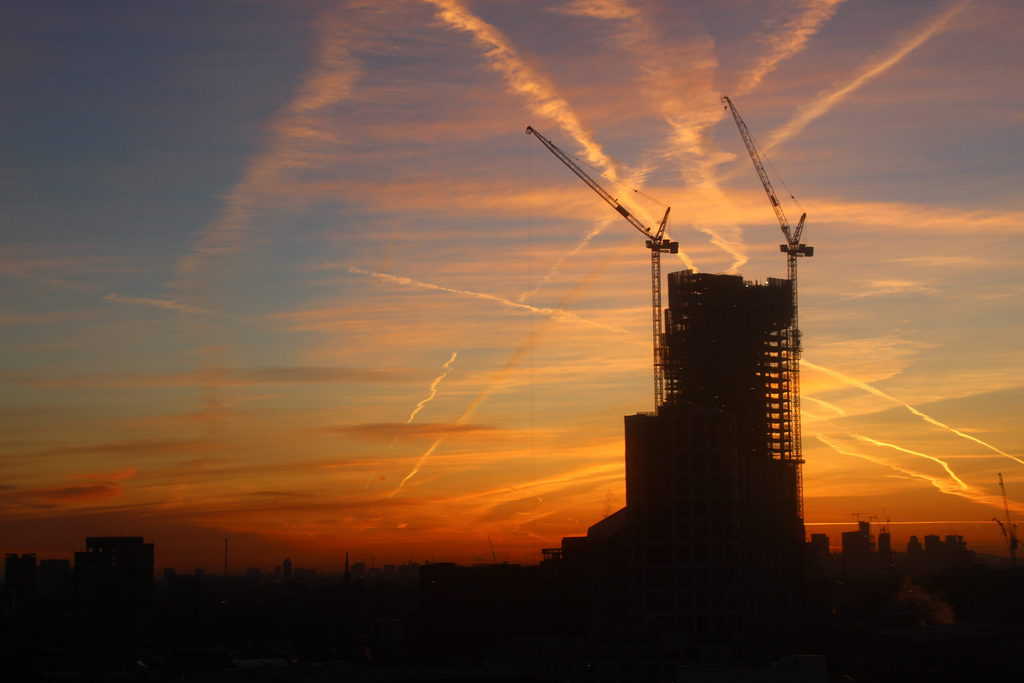
Photo by Oscar J Harper
Light Metering
In high contrast situations such as looking directly towards a low sun, you want to prevent the camera from under or overexposing, which it might do in an Average Metering of the whole scene. Instead, you can provide a little more control by switching to Spot or Partial Metering. This will allow the camera to consider the light of a much smaller area of the scene at and around the focussing point. You will be able to meter on only the area of the scene that you want correctly exposed and ignore the vast areas of shadow and highlight that could confuse the light meter.
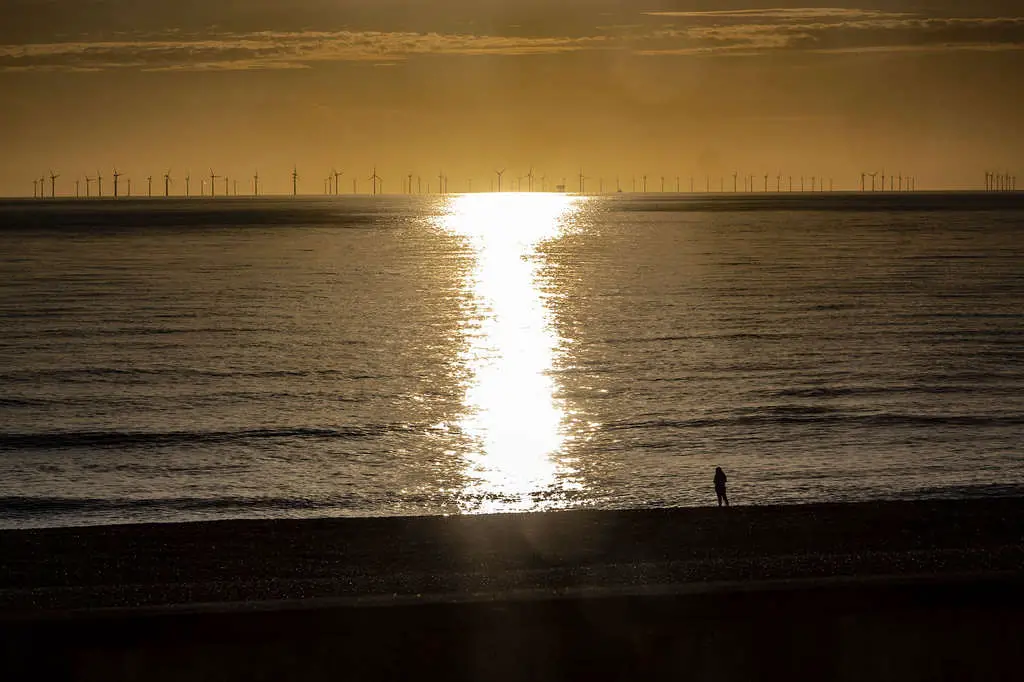
Bracketing
When the sun is very low in the sky, the lighting conditions will be more challenging with strong contrast between the sun and deep shadows. In this case, you may wish to consider bracketing (take three shots at different exposures). This will give you a choice of exposure outcomes so you can select the best one. You could also combine the three to get the best detail out of the shadows and highlights using the HDR (High Dynamic Range) method. You can do this in Adobe Lightroom Classic.
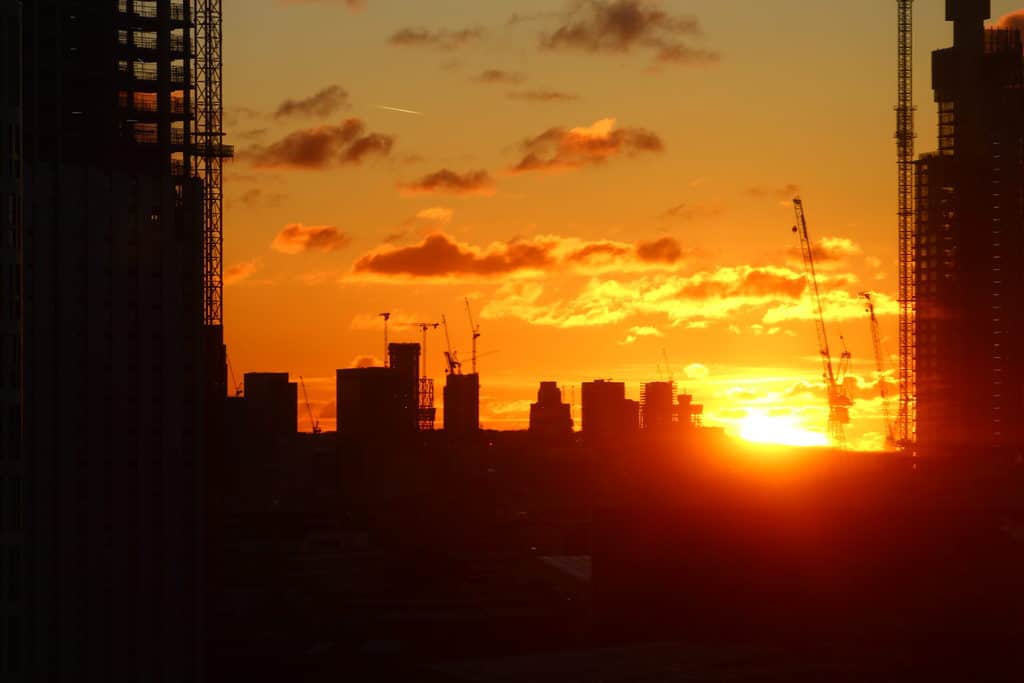
The difference Between The Two Golden Hours in One Day
As discussed before, there are two Golden Hours every day; one at each end of the day when the sun is less powerful, warmer hues and lower in the sky. The light has to penetrate through a thicker cushion of the atmosphere at these shallow angles. This is why the colours are intensified and look yellow, orange and red. The blue light waves are more scattered and removed by the gas molecules and dust particles in the atmosphere leaving the red, orange and yellow light waves to penetrate through. This is why the Golden hour light, at both ends of the day, is so named.
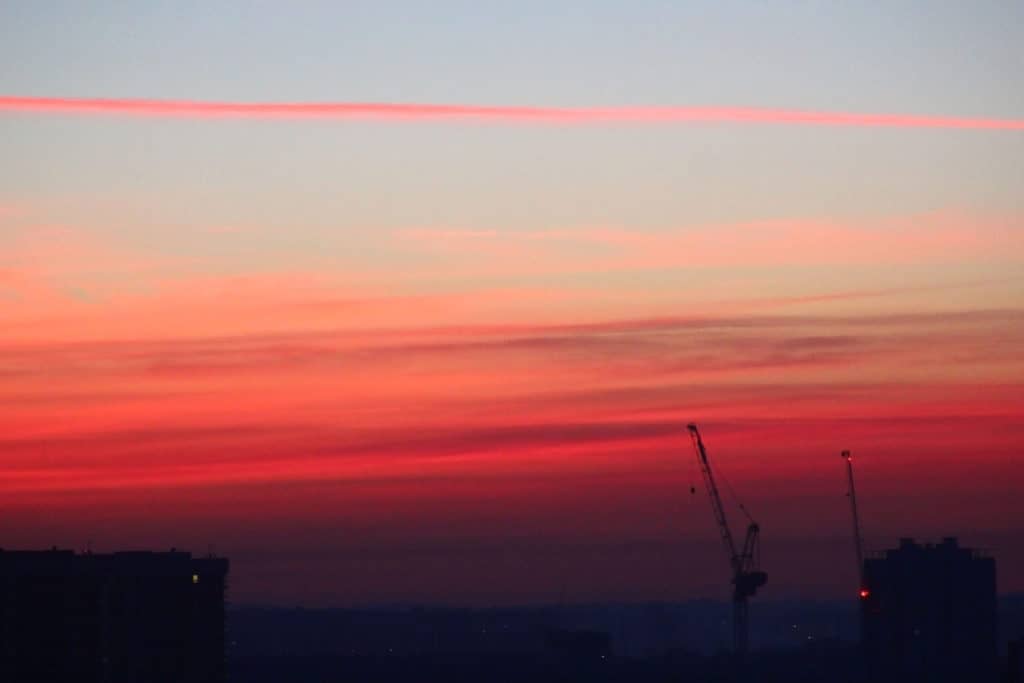
The sequence of sky colours is different at dawn and before sunset. In the morning at the beginning of sunrise, the sky will be a deep red and gradually moving through a range of diminishing intensities of warm colours: deep orange, orange, golden yellow, yellow and pale yellow. In the evening the sequence will be reversed starting with the pale yellows, gradually building in intensity through golds, oranges and red after sunset. Armed with this knowledge you will be well prepared to anticipate the forthcoming hues and colours that will be presented to you for capture.
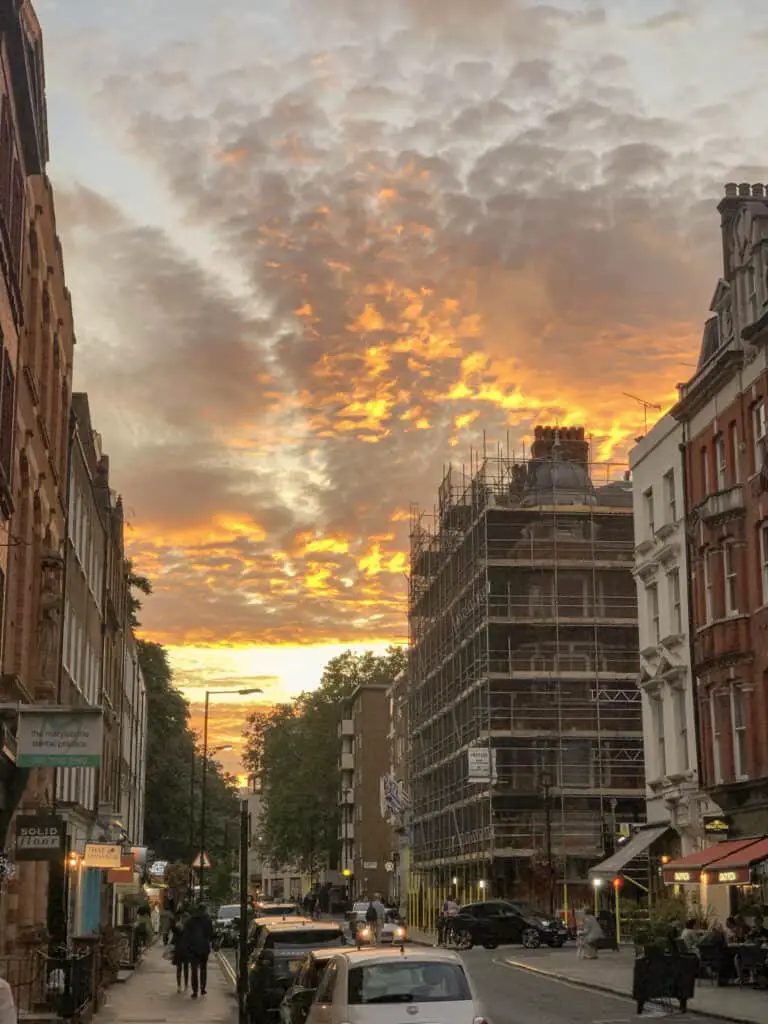
Evening Golden Hour
Photo by Oscar J Harper
How do You Photograph Into The Sun During The Golden Hour?
The light during the Golden hour is diffused and softened as it travels through the thick curtain of the atmosphere at the shallow, almost tangential angle. This means the light is more even and it’s easier to take a balanced picture with less extreme contrast. More detail should be revealed in the shadows and highlights. The long shadows should help to pick out textural detail. Looking into the sun or away from it will produce different effects in your photography though. Lets first have a look at the techniques required to photograph looking towards the sun.
Halo – The effect gives the subject a glowing edge and is achieved by backlighting with the low sun. The glowing rim can be enhanced if the subject entirely blocks out the sun or if it is captured against a darker background. The halo becomes move pronounced if the subject has a fluffy edge like fur, hair or some other translucent wispy material. A large aperture will blur out the background to make the halo look even sharper.
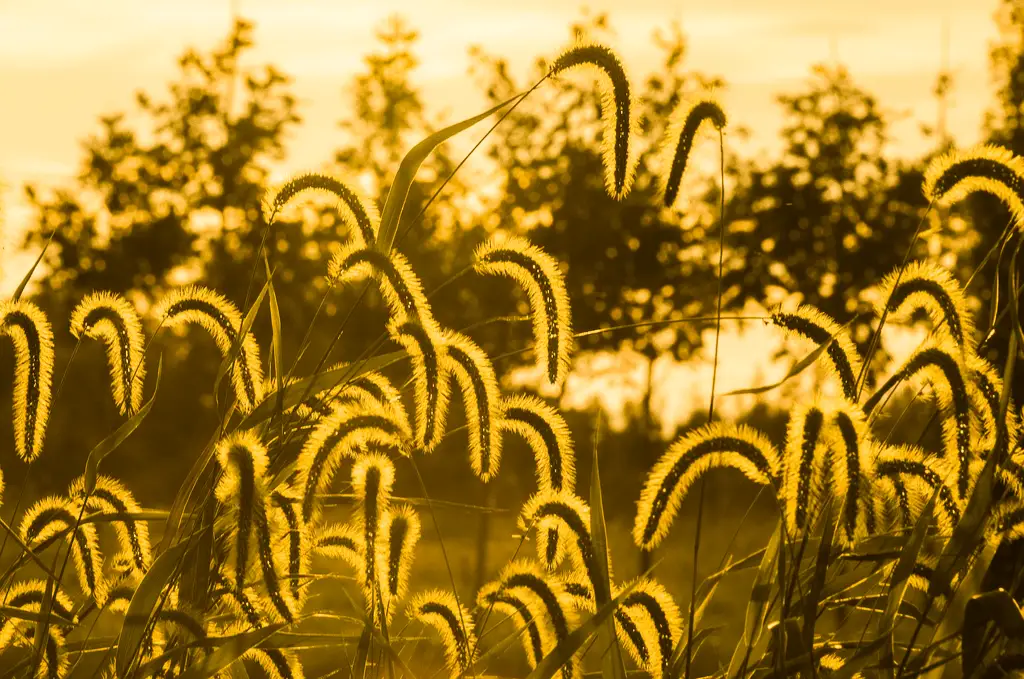
Silhouette – For subjects with more solid edges you can create strong silhouettes when the sun is very low in the sky. If you aim at the bright sky or the sun and set the meter off that you will guarantee a dark silhouette and intense colour in the sky.
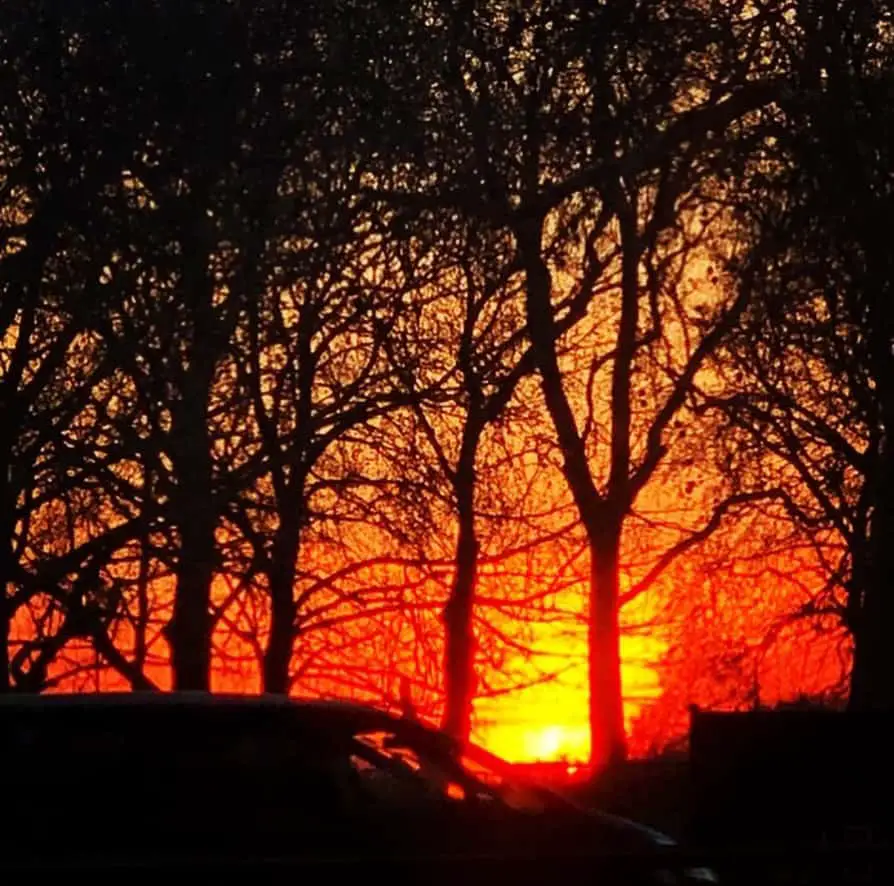
Lens Flares – You can achieve interesting patterns of hazy light rings when the sun directly strikes the lens off-centre. These are caused by light bouncing around inside the lens and being reflected back and forth off the glass elements and the aperture ring. The effect is maximised with a smaller aperture.
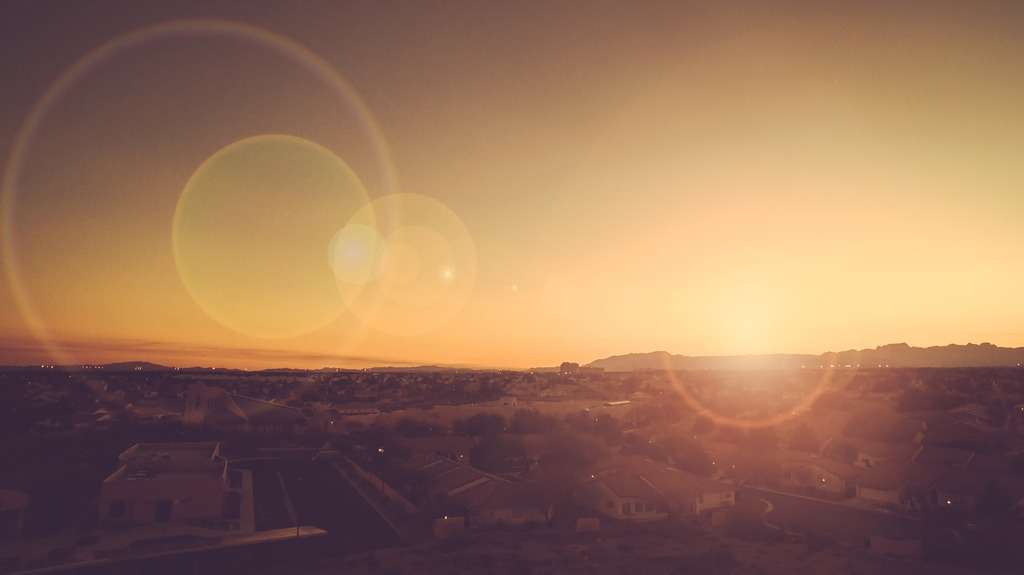
Starburst Flare – This can be achieved if you partially obscure the sun with a solid subject to reduce its size to a point source of light. You then see the classic spiky star shape. The number of spikes you see will depend on how many blades your aperture iris has and if it has an even or odd number of blades.
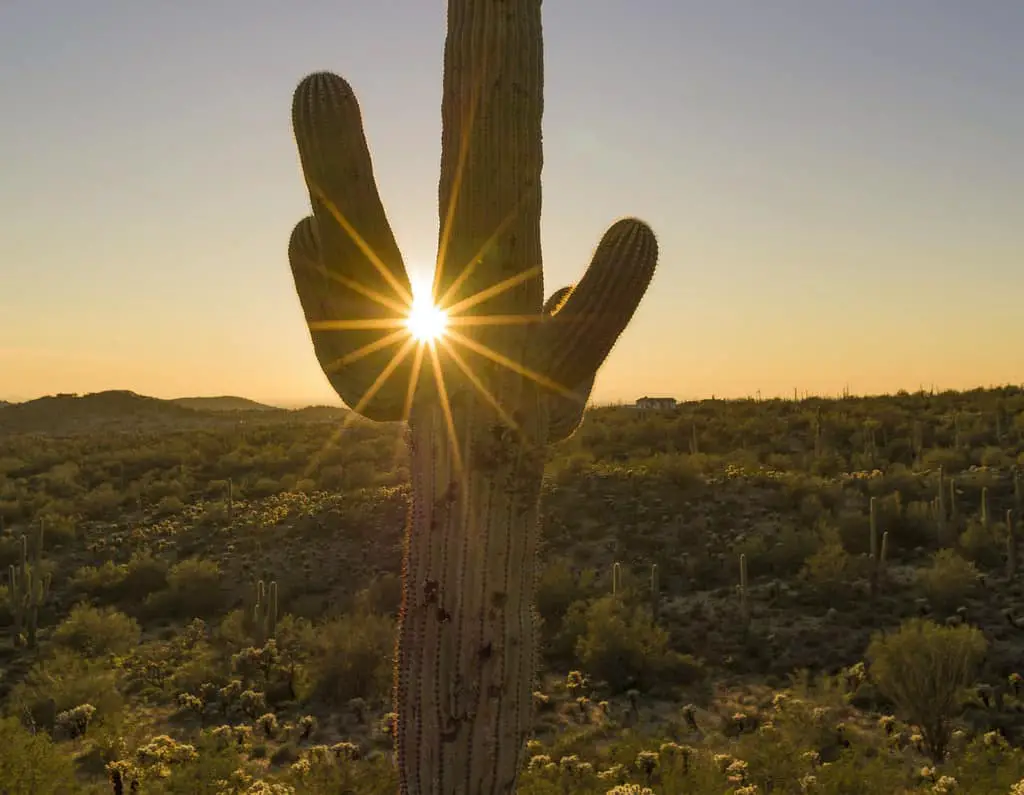
Architecture – Buildings will appear like strong silhouettes if the sun is behind them. You may be able to pull some detail out of the shadows though if the sun is obscured by the structure and you meter off the dark side of the building.
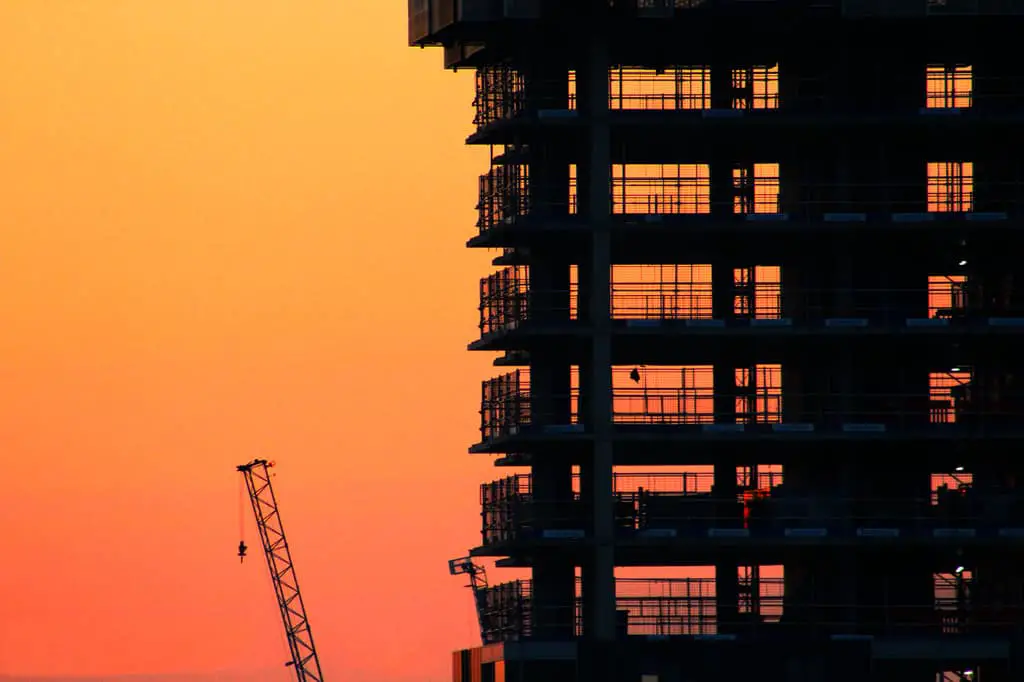
Landscape – Distant horizon features like mountains may appear like soft and hazy silhouettes tinged with pink or orange light. There should be some good detail in the foreground and midground though. The long shadows will pick out the texture of the ground. Use a small aperture for a deep depth-of-field and keep everything in sharp focus.
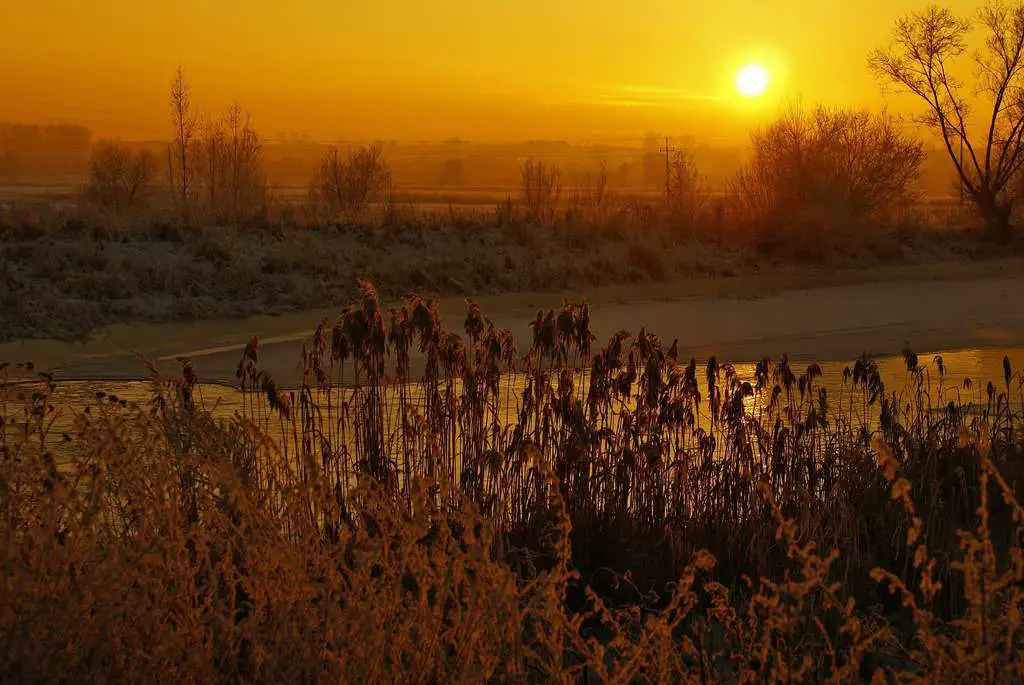
Portraits – Place models to capture some side illumination from the warm sun creating a partial silhouette with a golden edge. Use a white reflector to bounce some soft light into the dark side of the model for a more balanced lighting scheme. Use the flashgun to illuminate the model fully against the golden sky background. Meter on the bright side of the model. Adjust the exposure as necessary to lighten or darken the image.
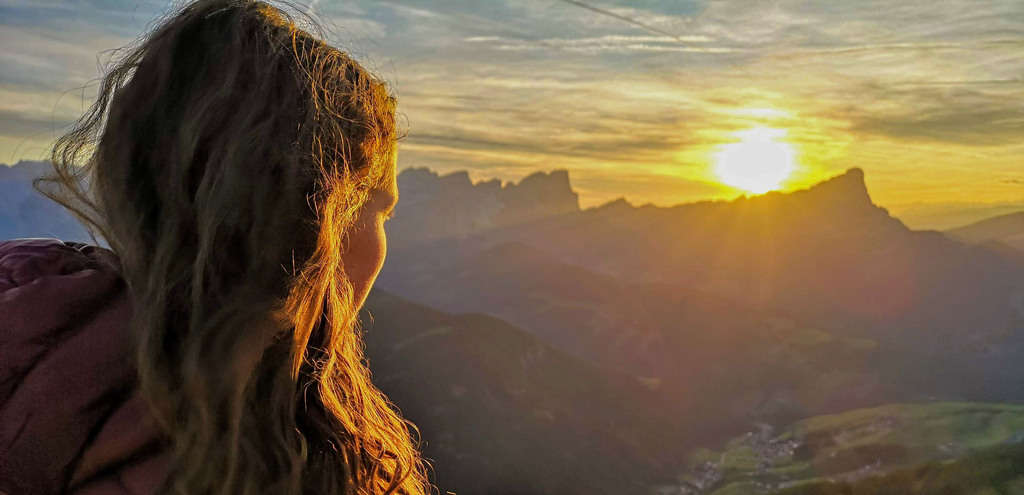
How do You Photograph Away From The Sun During The Golden Hour?
Soft warm glow – The direct light bathing the scene when you turn away from the sun will appear pleasant and golden with a soft warm glow. Subjects will be evenly lit with a diffused even light. The contrast will be low and should result in a good exposure across the whole frame and a great histogram shape.
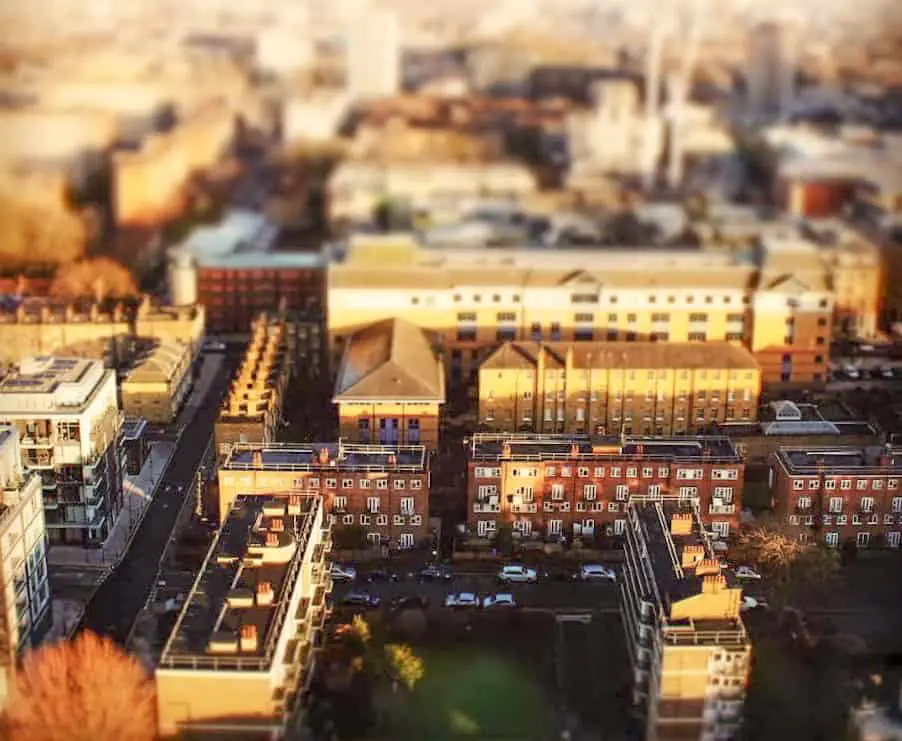
Shadow and light – These should be equally balanced with good detail being revealed in the highlights and shadows. The shadows will be long so be sure not to reveal your own shadow in the scene……. unless that is the intention.
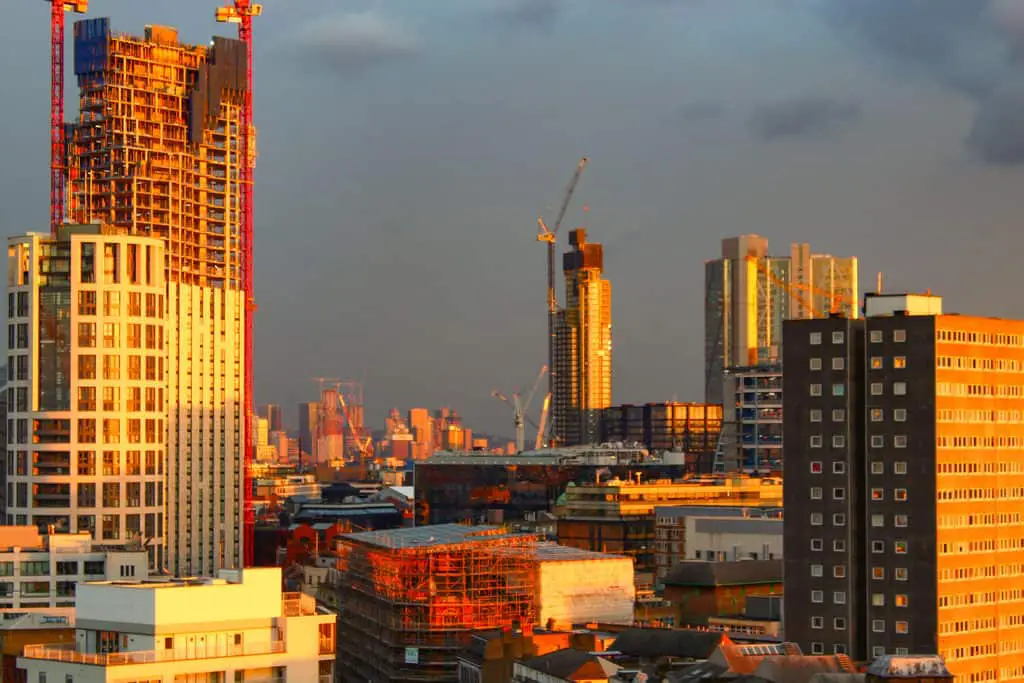
Architecture – The stonework of architecture takes on a warm honey glowing colour during this hour. Metalwork and glass may pick up and reflect the golden hues of the sky and sun. Steam and smoke will catch the glow of the golden light.
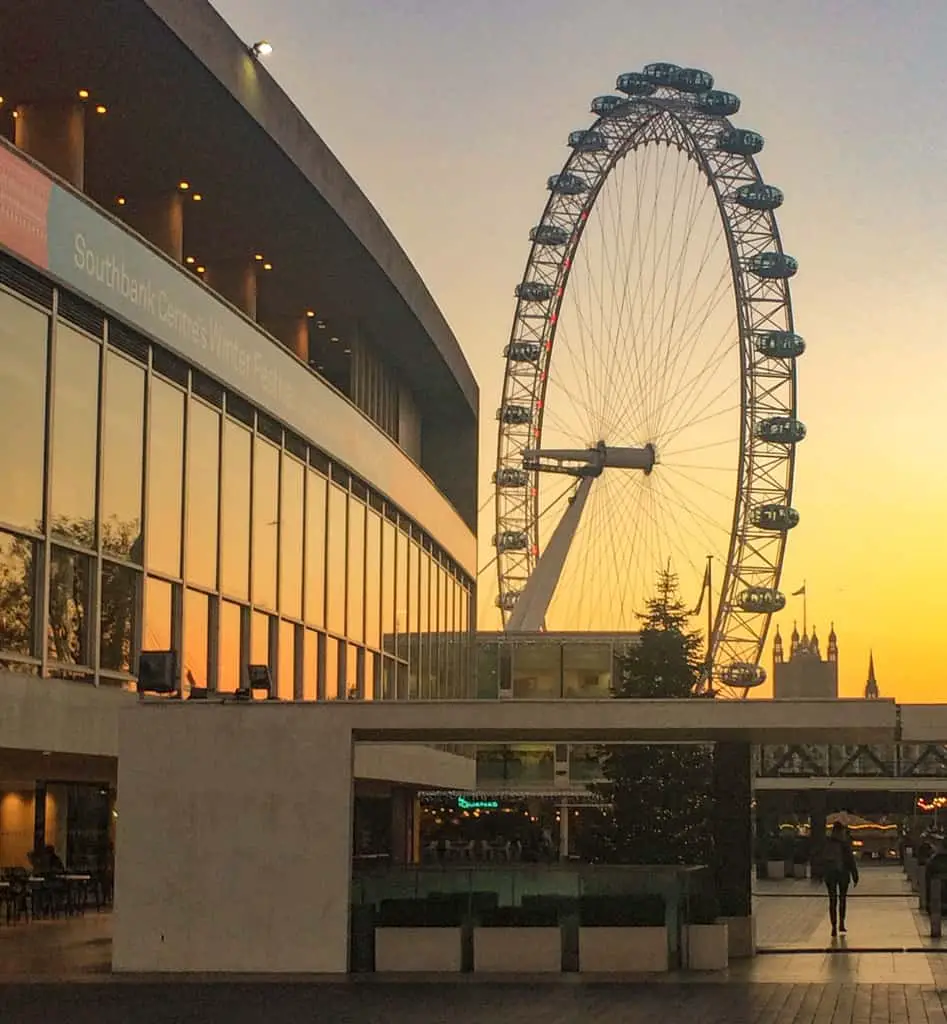
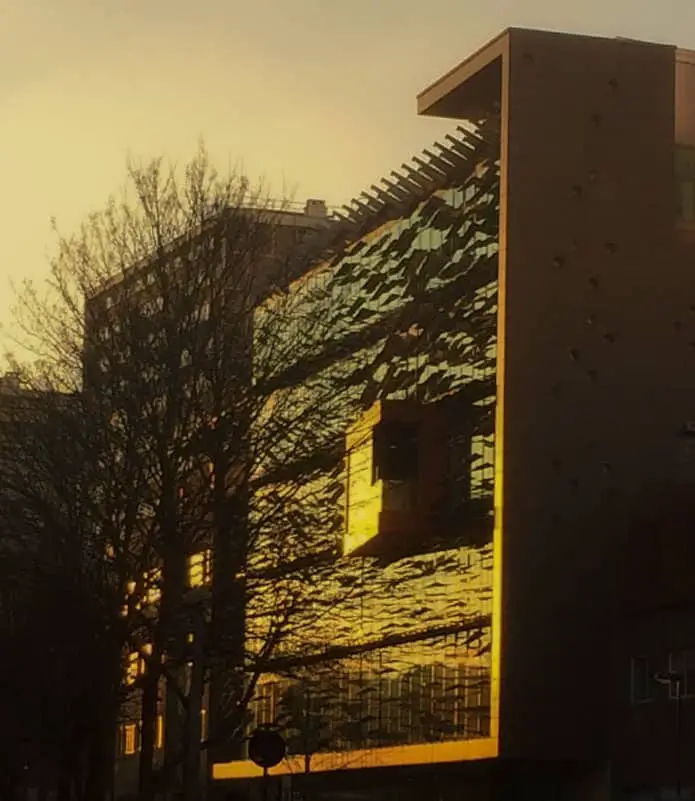
Reflected Golden Light
Photo by Oscar J Harper
Landscape – Bathed in the direct golden light, landscapes look warm and inviting. The scene will be well illuminated with great detail and soft shadows. The long shadows will add detail and texture to the ground and foreground. Use a small aperture and a tripod to maximise the depth-of-field detail from front to back. Watch out for your own shadow in such a wide scene.
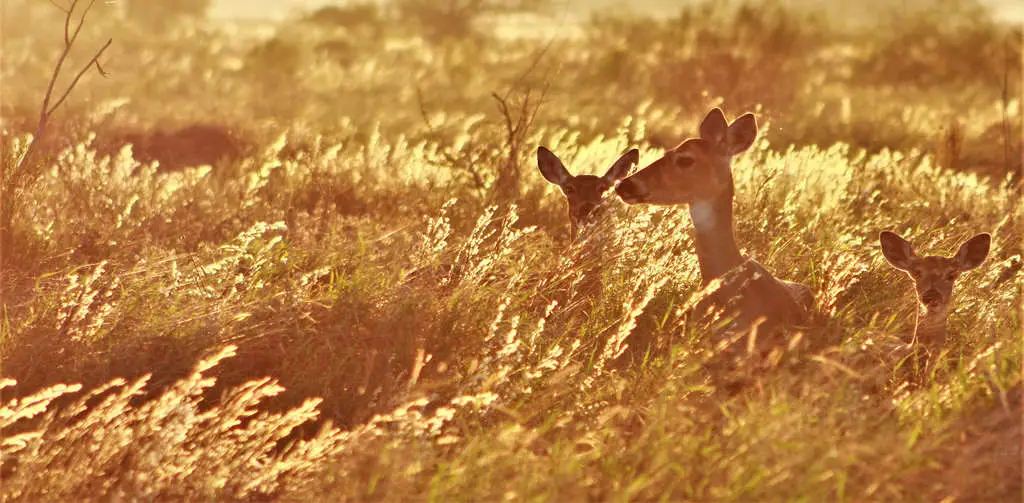
Portraits – Skin tones look great in direct golden light; it is the most flattering type of light for portraits which is why wedding photographers take advantage of it. The diffuse soft light is very forgiving on faces and the soft shadows minimise any harshness of contrast.
The Golden Hour in Different Seasons
Winter
As the days get shorter the sun is lower in the sky for longer periods so the Golden hour, sunset and sunrise are all extended. This gives you a little more time to capture your Golden Hour photographs.
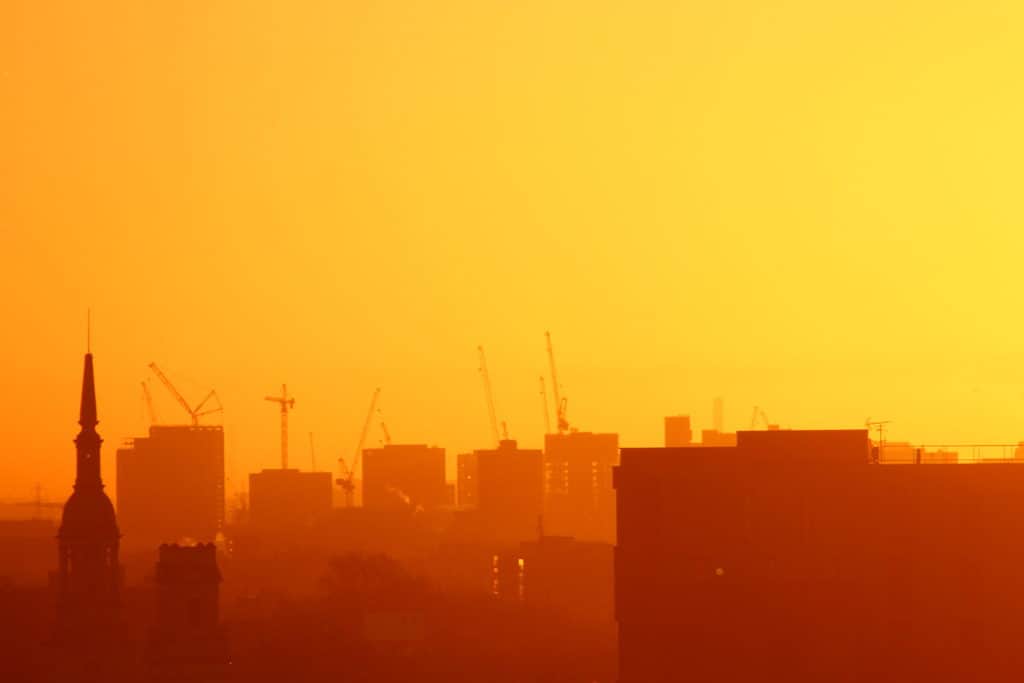
Summer
As the days get longer the sun is higher in the sky for longer periods so the Golden hour, sunset and sunrise are all reduced in duration. This gives you less time to capture your Golden Hour images but the light and colours will be intensified for some very dramatic skies and solar photographs.
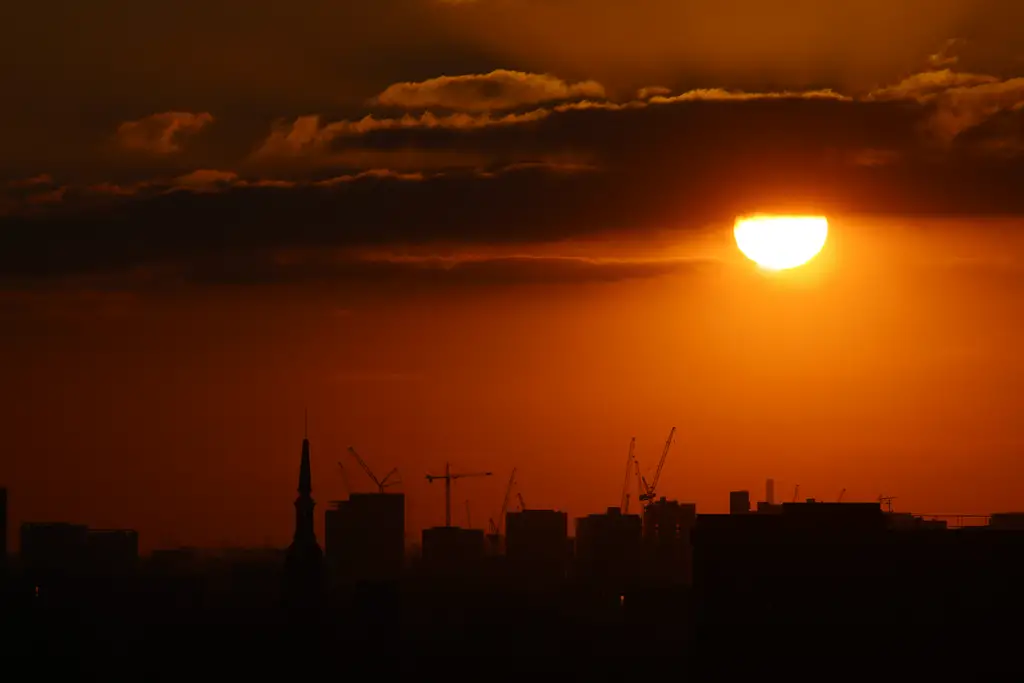
Related Question
What is Exposure Compensation in Photography?
Sometimes, in difficult lighting, your camera’s light meter gets the exposure wrong. You can override this manually by understanding how to compensate for these minor errors. To learn more about this very useful process, we wrote an article about this and you can read it here.
What is White Balance in Photography?
Your camera may be prone to producing photographs with an unfortunate colour cast. This is because different types of light have different colour temperatures. Learn how to take control of this aspect of your photography and produce much more natural-looking images by clicking on our article here.
What are ND filters in Photography?
It may sometimes be too bright to achieve very slow shutter speeds of multiple seconds or even minutes. In this case, you need to darken down the scene by applying dark filters that do not affect the natural colours of the scene. These are Neutral Density (ND) filters. You can learn all about them on this website, here.
What is RAW in Photography?
A camera can record masses of data from one image if you choose to record them in RAW. This is a file type that records all of the light and tonal data captured by the sensor without compression, at the point of pressing the shutter. This data can then be used in post-processing to reveal incredible amounts of detail, colours and tones that were previously unseen. To find out all about RAW file type and how to use it, click on our guide, here.
